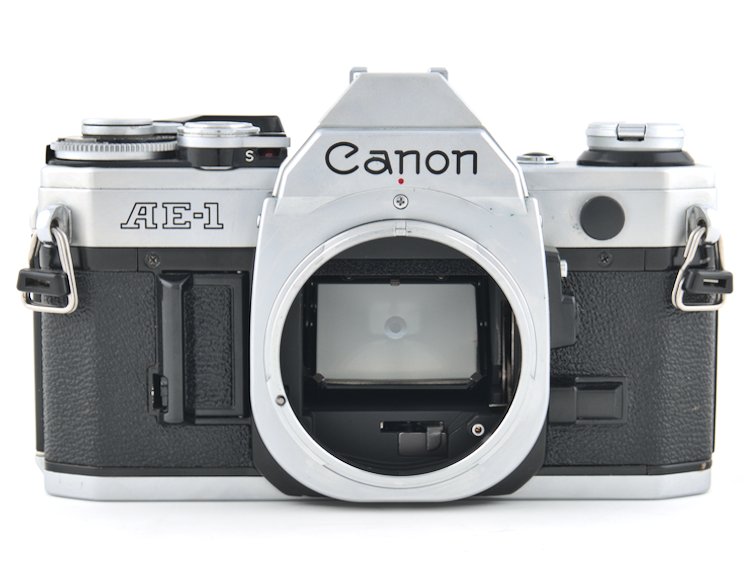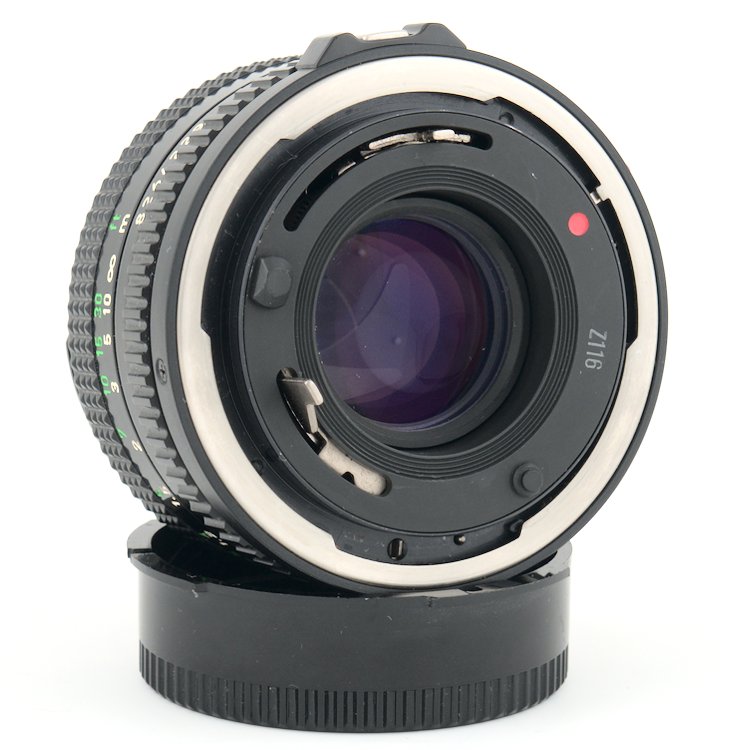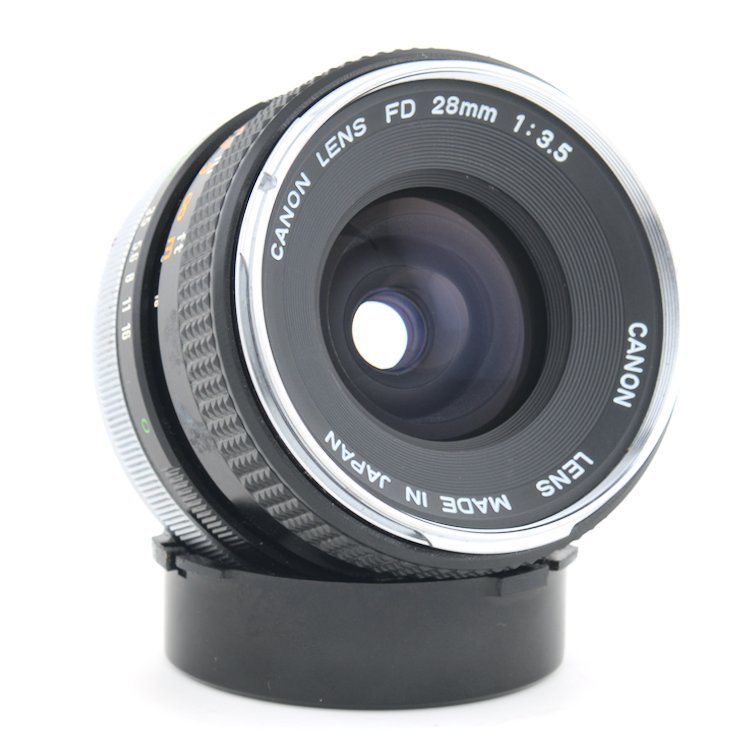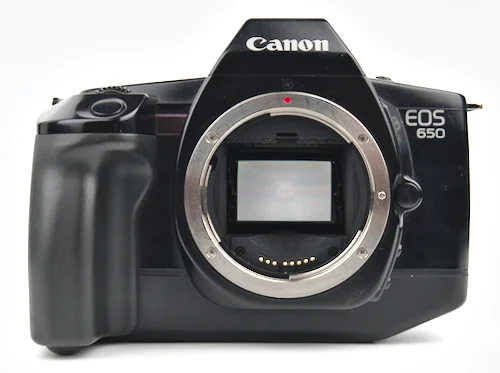Canon FD Lens Mount - 35mm Film SLR Camera Lens Mount

The Canon FD lens mount was used by Canon on 35mm film SLR cameras from 1971 until 1987. The FD mount was based off of the earlier Canon FL lens mount. It was replaced by the Canon EF lens mount, which was designed for auto focus.
The Canon FD lens mount uses a breech lock system to mount to a camera. This is a less common method than the most used solution, the bayonet mount.
Changes from the FL Mount
The Canon FD mount, introduced in 1971, offered several significant improvements and new features compared to its predecessor, the FL mount.
-
Automatic Diaphragm Function: Unlike the FL mount, the FD mount supports an automatic diaphragm function. In the FL system, the user needed to manually stop down the aperture of the lens to the desired f-stop before taking a picture. With the introduction of the FD mount, this was no longer necessary. The FD mount allowed for automatic control of the aperture, meaning the aperture would automatically close down to the selected setting when the picture was taken and then open up again to the maximum aperture. This made operation quicker and easier, especially in rapidly changing light conditions.
-
Full-Aperture Metering: The FD mount introduced full-aperture metering, an advancement over the FL’s stop-down metering. This meant that light metering could be done with the aperture wide open, providing a brighter viewfinder image and allowing for more accurate focusing and composition. When the picture was taken, the camera would automatically stop down the aperture to the selected setting, then open it back up again.
-
Automatic Exposure Control: The FD mount included a mechanical linkage that allowed the camera to control the lens diaphragm. This enabled automatic exposure control, where the camera could select the appropriate aperture based on the metered light. This feature made it easier for users to get correct exposures, especially in challenging lighting conditions.
-
Mounting Mechanism: Both FL and early FD lenses used a breech-lock mount. However, later versions of the FD mount (known as the “New FD” or “FDn” series) switched to a bayonet-style twist-lock mount, which was faster and easier to use.
Breech Lock Design

I’m not a fan of the breech lock system. The design makes it difficult to clean dust and debris that gets into the breech lock.
The later “new FD” lenses made mounting and len removal easier. Earlier versions could be mounted incorrectly, causing lenses to get stuck.
Over tightening or changes in temperature can cause lenses to be difficult to remove.
Fluorite ‘L’ Lenses
The highest quality FD lenses the Canon produced were ‘L’ series lenses. These lenses contained optical technologies that were more expensive to produce. This included aspherical optics and fluorite lens elements.
These lenses can be visually identified by the red rings around the front of the lens. This design choice was used on EF lenses and continues to be used on current RF mount lenses.
Autofocusing Lenses
Three of the autofocusing FD lenses will only work with the Canon T80. The lenses can be identified by their AC designation.
The FD 35-70mm f/4 AF, is the only FD lens that will autofocus on all camera bodies.
Specialty Lenses
Canon produced a full linenup of camera lenses. This includeds, tilt-shift, soft focus, reflex, fisheyes, macro, and bellows adapters.
Tilt-Shift Lens
Affiliate Advertising Disclosure
Outside the Shot is a participant in the Amazon Services LLC Associates Program, an affiliate advertising program designed to provide a means for sites to earn advertising fees by advertising and linking to Amazon.com.
As an eBay Partner, I may be compensated if you make a purchase. I also participate in affiliate advertising programs with KEH and Adorama. More can be found on the Affiliate Discolsure page.
The only OEM option is the Canon TS 35mm f2.8 S.S.C lens. At the time of writing, copies can be found on eBay for $500 or more.
One of the reasons the lenses are so expesnive is that they can be adapted onto mirrorless camera bodies. The manual controls are easy to use with liveview.
Flange Distance & Mount Diameter

| Lens Mount | Flange Focal Distance | Mount Diameter |
|---|---|---|
| Canon FL | 42.00 mm | 48.00 mm |
| Canon FD | 42.00 mm | 48.00 mm |
| Canon EOS (EF) | 44.00 mm | 54.00 mm |
| Canon RF | 20.00 mm | 54.00 mm |
The flange focal distance determines how the lens and camera interact to form an image on the camera’s sensor or film plane. An FD lens has been designed to mount 42mm away from the image sensor or film plane.
If the flange distance is not correct, the lens may not be able to focus across its entire range. If the lens is farther away, it will lose the ability to focus to infinity. If the lens is too close, it will not be able to focus on close subjects.
The mount diameter also increased over time. Both the FL and FD mounts have a diameter of 48mm, but the EOS (EF) and RF mounts increased this to 54mm. A larger diameter can allow for larger lens elements and wider apertures, which can improve image quality and low-light performance. It also provides more room for electrical contacts, allowing the camera and lens to communicate more information for functions like autofocus and image stabilization.
Adapting Lenses
When it comes to adapting lenses to different camera systems, the flange focal distance is the determining factor. If you have a lens system with a shorter flange distance (like the Canon FD mount) and you want to adapt it to a camera system with a longer flange distance (like the Nikon F-mount or Canon EOS EF), you’ll encounter focus problems.
Canon’s RF mount, designed for mirrorless cameras, has a 20mm flange distance. A shorter distance is possible because there is no mirror taking up space in the camera.
List of Cameras that Use the Canon FD Len Mount
- Canon F-1 (1971)
- Canon FTb (1971)
- Canon FTbn (1973)
- Canon EF (1973)
- Canon TLb (1974)
- Canon TX (1975)
- Canon AE-1 (1976)
- Canon AT-1 (1976)
- Canon A-1 (1978)
- Canon AV-1 (1979)
- Canon New F-1 (1981) (new design)
- Canon AE-1 Program (1981)
- Canon AL-1 (1982)
- Canon T50 (1983)
- Canon T70 (1984)
- Canon T80 (1985)
- Canon T90 (1986)
- Canon T60 (1990)
Other Canon Lens Mounts

- Canon EF
- Canon EF-S
- Canon RF
- Canon EF-M
- Canon R (35mm film rangefinders)
- Canon FL